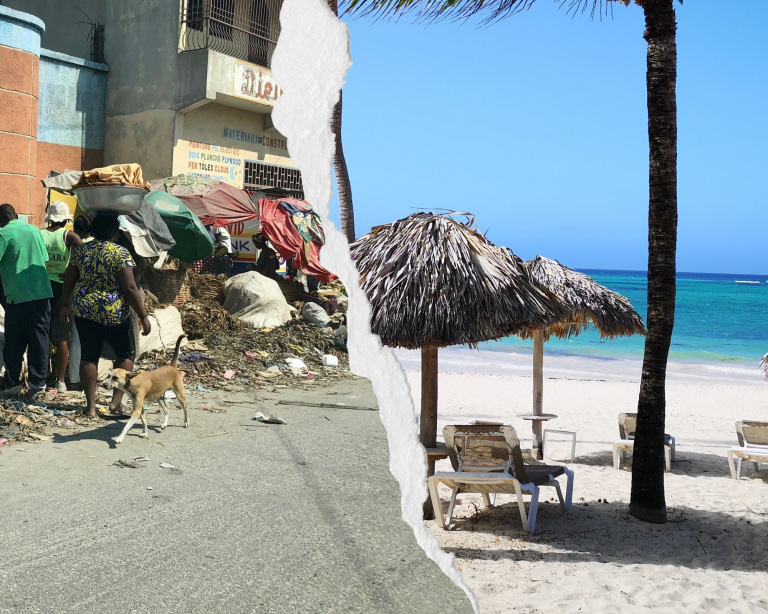An Ultimate Guide To Dominican Republic For Digital Nomads
This digital nomad guide is written by Chris, who is a digital nomad since 2019 and has been living in the Dominican Republic for around 7 years. He has traveled to every region in the country extensively and knows the best spots for an ice-cold after-work Cuba Libre with a view.
Living in the country for 7 years, traveling to all 31(+1) provinces, working from different locations in the Dominican Republic, organizing adventure holidays for hundreds of visitors and having published more than 160 extensive travel guides about the Dominican Republic on his two websites – there is hardly anyone who knows more about the Caribbean’s most affordable country than Chris.
Probably the most interesting fact about the Dominican Republic is that it is absolutely underrated – both as a (individual) travel destination as well as a digital nomad base for a few months.
Most people only know the Dominican Republic as a heaven for all-inclusive holidays, but it is also a true paradise for adventure seekers, digital nomads who want to enjoy the Caribbean vibes in an affordable way (and who don’t necessarily need co-livings or a dozen co-working spaces) as well as those who want to immerse deeper into the Latin culture.
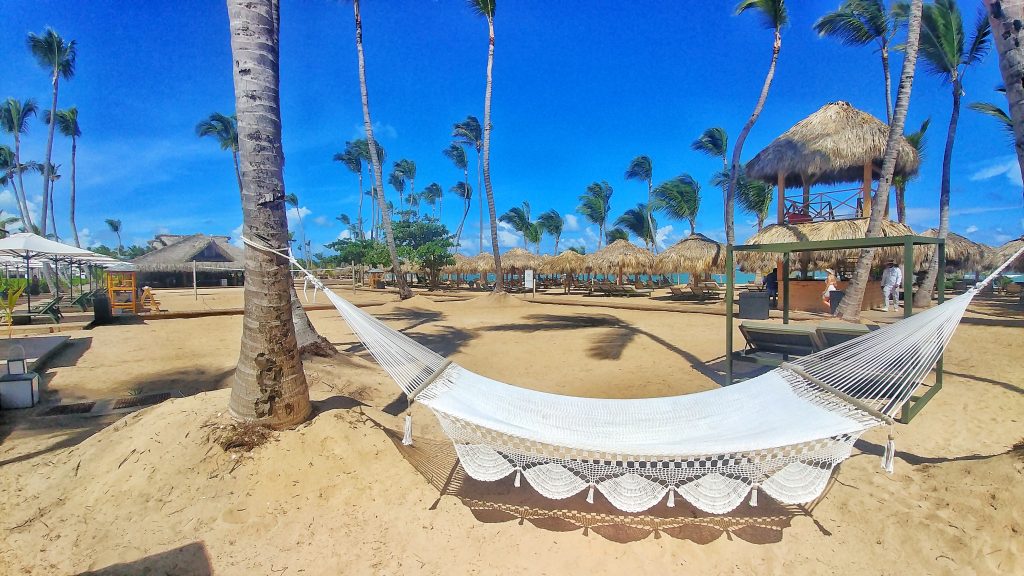
Is The Dominican Republic Good For Digital Nomads?
The Dominican Republic is a good spot for digital nomads, particularly as the infrastructure is pretty stable and developed compared to other Caribbean countries, whereas the level of prices is moderate.
You won’t find a perfect digital nomad infrastructure with dozens of co-working spaces like in Colombia or Mexico, but this guarantees a more authentic experience instead of just visiting another digital nomad bubble.
Still, the conditions and working environment for digital nomads in the Dominican Republic are very good.
First of all, the internet is very quick and cheap. While usually all accommodations have more or less reliable WiFi, particularly apartments and Airbnbs have a stable broadband connection. Furthermore, mobile data is very cheap – 10 GB of internet for 5 days is just around 3 USD.
Check out the sections below in this Dominican Republic digital nomad guide for more information about the cost of living.
In case you decide for a few weeks or months as a digital nomad in the Caribbean, the weather is incredibly pleasant as well. You have year-round high temperatures between 80 and 90°F and even during the rainy season (May to November), the amounts of rain are very decent. Hurricane season runs from June to November, but the chances of being hit by a hurricane are very low (especially as the predictions usually come with a 3-4-day advance notice).

Digital Nomad Scene In The Dominican Republic
As mentioned above, digital nomads in the Dominican Republic won’t find the typical “social” infrastructure you’re used to in other countries like Mexico, Colombia, Indonesia (Bali) or Thailand.
There are a few co-working spaces scattered in the country, but mostly you will work from cafés or your apartment.
Furthermore, if you are looking for digital nomad meetups in the Dominican Republic, you won’t find many groups.
However, this doesn’t mean that you have to spend your time completely lonely while being in the country nor that there are no international people around.
In fact, the Dominican Republic has a super large community of expats in nearly all places of the country.
It is just not the typical digital nomad, rather than all kinds of other people of all ages.
Particularly large expat communities can be found in Santo Domingo, Bavaro/Punta Cana, Bayahibe, Las Terrenas, Cabarete, Sosua, Puerto Plata and a couple of other smaller beach towns around the country.
Therefore, if looking for meetups, you better look for the websites of Couchsurfing and Internations or for Dominican Republic expat groups on Facebook instead of using the typical digital nomad platforms.
Particularly in Santo Domingo, the capital of the Dominican Republic, you can also find a large group of well-educated, open-minded and English-speaking locals, which makes it a particularly interesting hotspot to dive into the local culture.
Does The Dominican Republic Have A Digital Nomad Visa?
To date, the Dominican Republic has no digital nomad visa. However, visa regulations are pretty easy.
Visitors from more than 100 countries, among them the US, Canada and all the Schengen countries, can enter the Dominican Republic visa-free. There used to be a 10 USD tourist card you had to buy, but this is included in your flight ticket since a couple of years ago.
You can stay in the country for up to 30 days. If you want to stay longer, you can extend your stay up to 120 days online for a fee (approx. 50-90 USD, depending on how long you stay).
Alternatively, many visitors are also choosing to not apply online for an extension and staying illegal in the country, which isn’t considered to be a huge problem. When you leave the country, you just pay a fine of the same amount the visa extension would have been.
In general, immigration procedures to the Dominican Republic are very easy and straightforward. The country is very visitor friendly. Tourism is the income source No. 1 and the most important industry, which is why visitors and digital nomads in the Dominican Republic are usually treated very well.
Do Digital Nomads Pay Tax In The Dominican Republic?
As a regular digital nomad who stays in the country for a few weeks or 2-3 months, you don’t have to pay taxes in the Dominican Republic.
In case you’d like to stay longer, it depends heavily on your type of business, where you’re getting your income from and which nationality and tax residency you have.
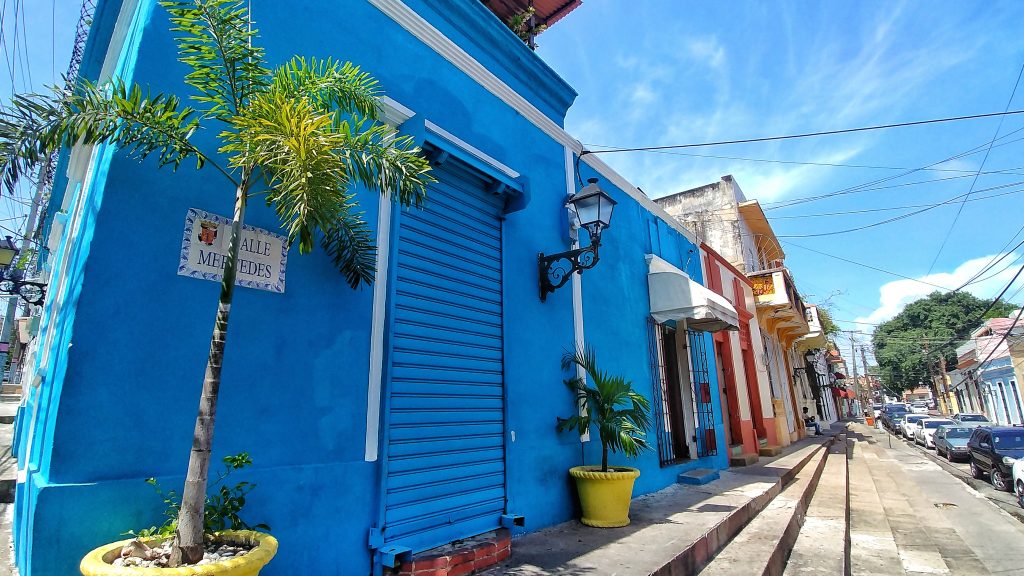
Where Should I Live In The Dominican Republic As A Digital Nomad?
As mentioned, there are not plenty of co-working spaces in the Dominican Republic hence when looking for a place to stay in Punta Cana, Santo Domingo or elsewhere, I highly recommend checking for one which is suitable for working as well.
Furthermore, location is a very important factor particularly in Dominican cities, because of safety (don’t rent an apartment in poor neighborhoods) and because you don’t want to spend half of your day in traffic jams. Pick your location wisely depending on where you’re moving around most of the time.
The following sections show you some of the best places to live as a digital nomad in the Dominican Republic.
Top Destinations For Digital Nomads In The Dominican Republic
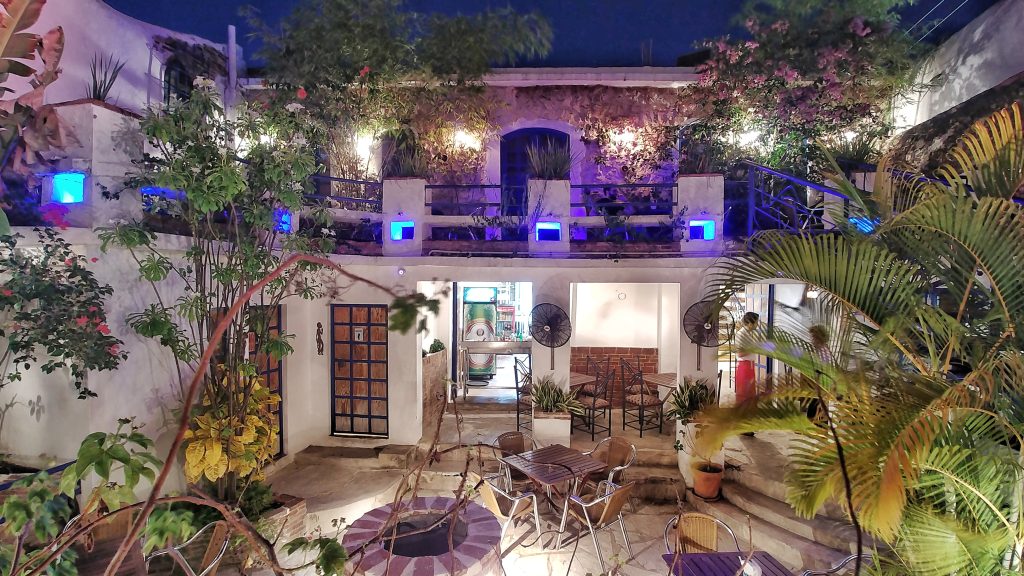
Santo Domingo
If the main focus of your digital nomad stay is working, culture, networking and maybe nightlife, Santo Domingo is definitely the best place to stay for you.
It is the cultural melting pot, the center of entrepreneurs, the financial hub and the most versatile place in the Dominican Republic. Furthermore, its centric location allows you to perfectly explore all touristic highlights and attractions in the Dominican Republic within a maximum of 2-3 (car) respectively 3-4 (bus) hours, as most of the highways and bus lines are starting and ending in Santo Domingo.
If you want to live in Santo Domingo for a few weeks or months, pay particular attention to the location for the reasons mentioned above. The Colonial Zone, Naco and Piantini are great areas to live, depending if you prefer an alternative and busy vibe (Colonial Zone) or if you prefer a more modern and cosmopolitan approach (Naco and Piantini). Gazcue is also a pleasant area to live and is somewhere in between those two.
The cost of living in the Colonial Zone is usually a bit cheaper than in the other areas mentioned.
Santo Domingo has a great city life and you will find expats, special interest groups and local meetups of all kinds. The nightlife in the Colonial Zone is top-notch with different bars, local dance clubs (“dancing” is to be meant literally) and various hangout spots. Just keep in mind that Santo Domingo is hot and pretty much a concrete jungle without a beach and without many parks. Plan on weekend journeys or road trips in the Dominican Republic to explore all the wonderful beauties of the country.
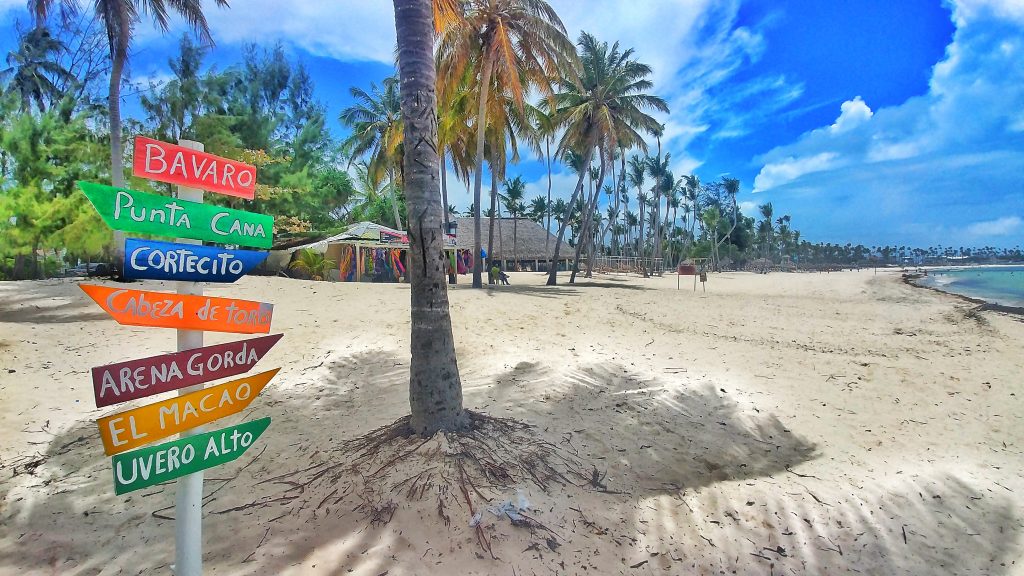
Punta Cana
Punta Cana is the perfect digital nomad location in the Dominican Republic if you love to enjoy the touristic infrastructure in combination with the picture-perfect mile-long beaches. It is also considered to be the safest area in the Dominican Republic and has the best flight connections with direct flights to Punta Cana International Airport from more than 35 (!) North American cities and more than 20 countries – even though Santo Domingo is ramping up recently, as a new national low-cost carrier (Arajet) has started just at the end of 2022 with direct flights to 15 North and Latin American countries in less than a year.
If you choose Punta Cana as a digital nomad, you should know that this area is a little bit special. It is much more organized and mannerly than the rest of the country, but it lacks the typical Dominican vibe.
Punta Cana is more expensive than all other digital nomad areas in the Dominican Republic mentioned here and while it offers a lot of interesting tours and excursions, it lacks the wide array of adventures you can find in other parts of the country.
Still, Punta Cana is a viable option for digital nomads particularly as you have an incredibly huge choice of apartments (just in Airbnb you can find more than 6000 listings only for Punta Cana) and a very easy expat life.
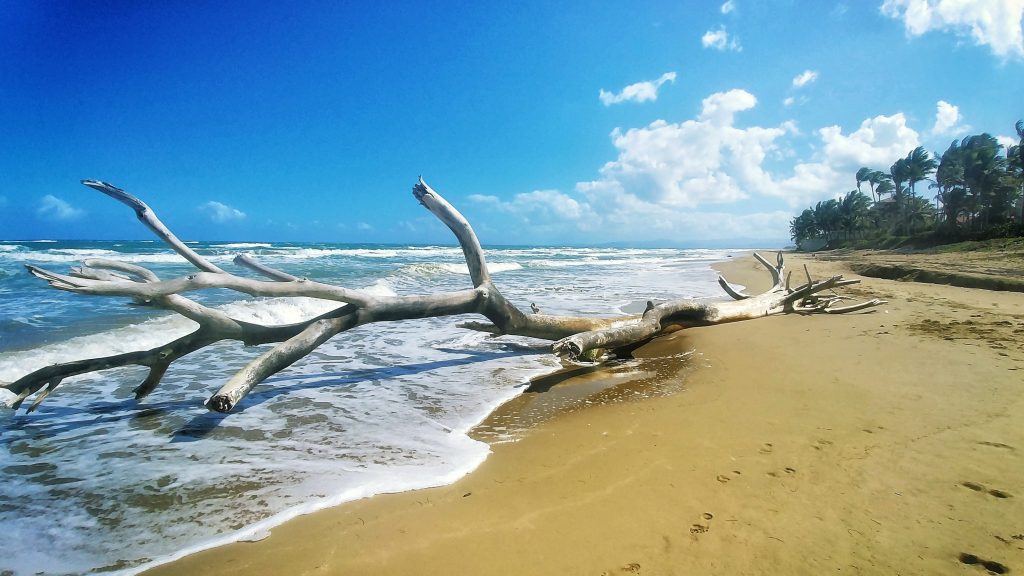
Cabarete
Cabarete is the perfect destination if your daily working routine should include ocean, beach and optional surfing. The small but bustling town on the north coast of the Dominican Republic, less than an hour away from Puerto Plata, is a major surfing spot in the Caribbean (windsurfing, kitesurfing and regular surfing) and the “adventure capital” of the Dominican Republic, as you can find all kind of outdoor activities here, such as canyoning, hiking, waterfall chasing, caving, rappelling, river tubing, SUP, kayak or mountain biking.
But not only do the activities make Cabarete a perfect spot for (younger and more active) digital nomads looking for the perfect Caribbean place, but also the vibe is unique and super welcoming for expats, nomads and all other open-minded people. There are a lot of beach bars, surf camps, coffee shops (including some good ones to work remotely) and healthy food stores in Cabarete, making it the perfect place for digital nomads in the Dominican Republic.
Another plus: Cabarete is very cheap and usually you pay half the price of anything compared to Punta Cana.
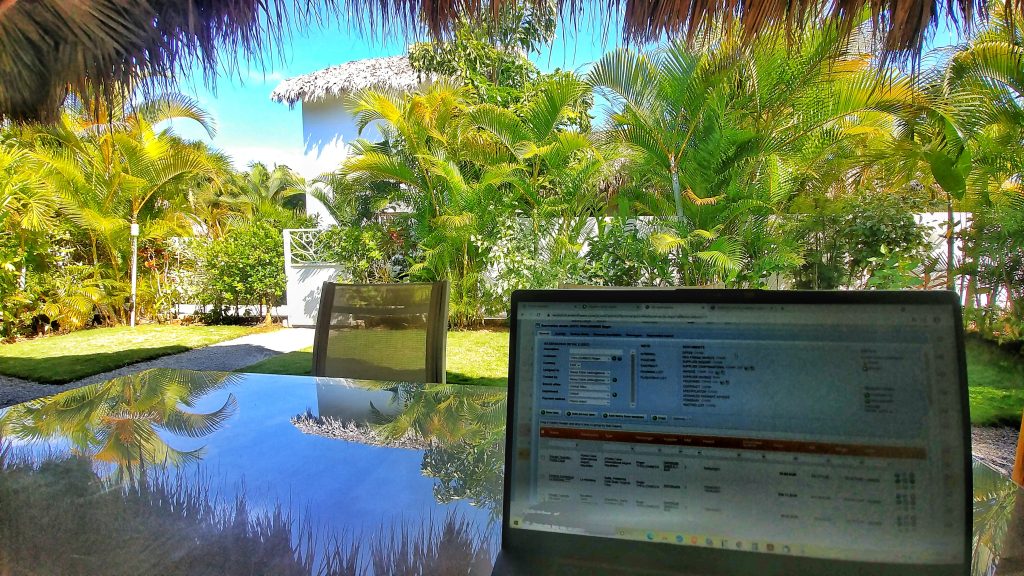
Las Terrenas
If Cabarete is not to your liking, if you’re looking for something a little bit more relaxed or if it is simply too far for you (Cabarete is at least 8 hours with public transport coming from Punta Cana and more than 4 hours from Santo Domingo), have a look at Las Terrenas. It is another low-key beach town with plenty of affordable ocean-view apartments (or rentals super close to the beach), a lot of expats as well as good accessibility and some of the best beaches in the Dominican Republic.
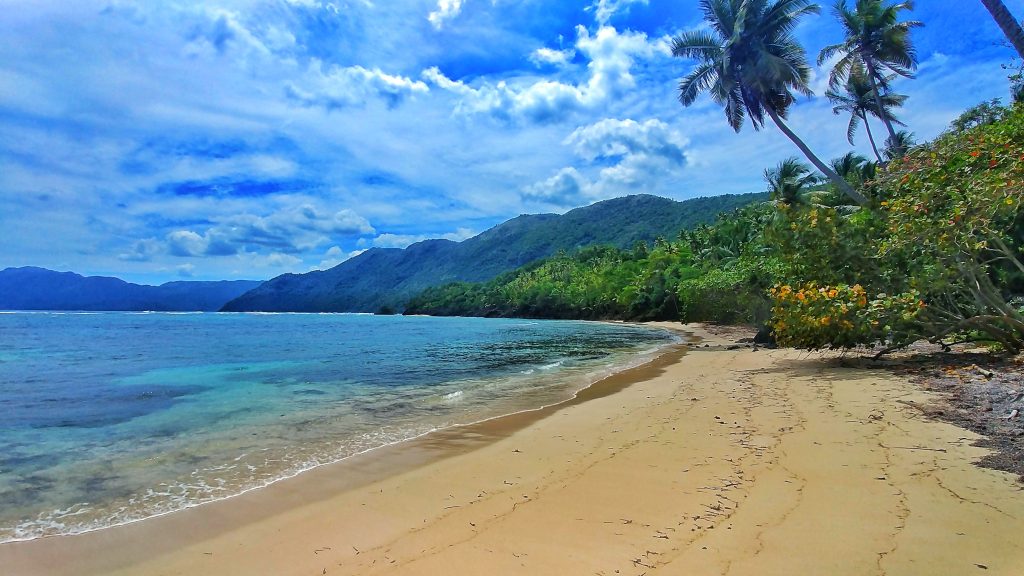
Las Terrenas is located on the Samaná peninsula which is known to be one of the most beautiful regions in the Dominican Republic.
Cost Of Living In The Dominican Republic
Considering the local salaries (the minimum wage is around 200 USD per month), the Dominican Republic is a very expensive country to live in.
However, with a monthly income of at least 1500 USD, you can live extremely well in the country. Although not super cheap like Colombia, Indonesia or Thailand, prices in the Dominican Republic can be compared with Mexico, Panama or some Eastern European countries.
Apartment rental
If you rent for at least a month, decent apartment rentals (1-bedroom) in a good location are available for around 600-800 USD, especially in the recommendable areas mentioned above for Santo Domingo as well as in Las Terrenas or Cabarete.
Cheaper is always possible and you can find places for as cheap as 200-300 USD per month, but the question is if you really want to live there. For Punta Cana, expect to pay more like 800-1000 USD, even though you can get it cheaper if a centric location is not important for you.
Utilities
Water is always included in any rent, electricity usually not. The latter one depends heavily on the area you are in and the consumption.
1 month of electricity in Santo Domingo without using air-conditioning can be as cheap as 10 USD per month, whereas a month in Punta Cana with air-con use can easily be 100 USD and more. The base rate of electricity in Punta Cana is three times the price of Santo Domingo.
Food
Groceries are reasonable priced, even though there are heavy differences between local goods (cheap) and imported goods (expensive). For fruits and vegetables, try to buy from local market vendors.
Here are a few grocery example prices, which are similar in the entire country:
Local eggs (pack of 6 eggs): 55 DOP (approx. 1 USD)
Local pasta (1 pound): 30 DOP (approx. 0.50 USD)
Local rice (1 pound): 35 DOP (approx. 0.70 USD)
Local bananas (per piece): 7,5 DOP (approx. 0.15 USD)
Local mangos (per piece): 25 DOP (approx. 0.50 USD)
Local onions (per pound): 90 DOP (approx. 1.60 USD)
Local carrots (per pound): 35 DOP (approx. 0.70 USD)
Tomatoes (per pound): 40 DOP (approx. 0.75 USD)
Bell pepper (per pound): 70 DOP (approx. 1.20 USD)
Local cheese (per pound): 250 DOP (approx. 5 USD)
Imported cheese (per pound): 350 DOP and up (approx. 6.50 USD)
Local milk (1 liter): 65 DOP (approx. 1.20 USD)
Beer is expensive in the Dominican Republic (at least 4 USD in most bars), good rum is cheap (10 USD for a good bottle in the supermarket).
For eating out, plan on 3-4 USD for lunch in a local Comedor and around 10-15 USD for any meal in a typical sit-down restaurant.
Transportation
Transportation is very reasonably priced in the Dominican Republic. The cost within Santo Domingo is usually around 0.50 USD for local busses, shared taxis and cable cars. Uber costs around 4-6 USD for a 20-30-minute ride. Long-distance busses are priced around 6-8 USD for most distances of around 3-4 hours.
In case you are planning to buy a car or a scooter think twice, as the Dominican Republic is well-known for traffic jams and chaotic drivers.
If you need a rental car for a couple of days (to leave the city), you shall budget around 50-60 USD per day incl. full insurance.
Sim Card
A Sim Card is easy to get with the three large telecom companies, Altice, Viva and Claro. The Sim Card is usually around 4 USD, internet with Altice for example is less than 3 USD for 10 GB valid for 5 days.
Best Places To Stay & Work In Dominican Republic For Digital Nomads
Cafes
For digital nomad-friendly cafés, the Colonial Zone in Santo Domingo is your best bet. There are dozens of coffee shops, among them Café Affogato, Café Gato or Mamey Libreria.
Coworking spaces
The following are some of the best co-working spaces in the Dominican Republic:
– Comun CoWork, Las Terrenas
– Cana Work, Punta Cana
– La Mochila Co-Working, Santo Domingo
– Chez Space, Santo Domingo
– Pyhex Work, Santo Domingo
There is (or seems to be) currently no co-working space in Cabarete.
Colivings
There are currently no co-livings in the Dominican Republic.
Pros & Cons Of Living in Dominican Republic As A Digital Nomad
Pro #1: Hidden Gem
The Dominican Republic is a hidden gem among digital nomad destinations in the world. You won’t find the typical nomad infrastructure here, but a lot of welcoming locals, stable internet, endless adventures, affordable prices and pristine beaches.
Pro #2: Cheap Flights
Especially if you’re coming from Europe and need a winter destination in the sun, flight prices to the Dominican Republic are among the cheapest.
If coming from the US or Canada, flights are not that cheap compared to other Central American destinations, but connectivity with non-stop flights from 35 cities is unmatched.
Pro #3: Beach Workation
If your dream is to work close to the beach for affordable rates, you have plenty of opportunities in the Dominican Republic. Las Terrenas and Cabarete are the top spots in the country, but you can also check out Juan Dolio, Punta Cana, Bayahibe, Las Galeras or Sosua.
Con #1: Noise level
Dominicans don’t have any respect for the level of noise respectively your inner peace. Everything is loud in the country, particularly the omnipresent motorbikes, music around every corner or simply the people yelling at each other. If you need to work in a particularly quiet environment, the Dominican Republic could be a difficult option for you.
Con #2: Missing co-working and co-livings
So far, the infrastructure of co-livings and co-workings in the Dominican Republic is very limited. If you are dependent on these kinds of places for a successful stay, it might be better to choose one of the more famous digital nomad destinations in Latin America, such as Colombia or Mexico.
